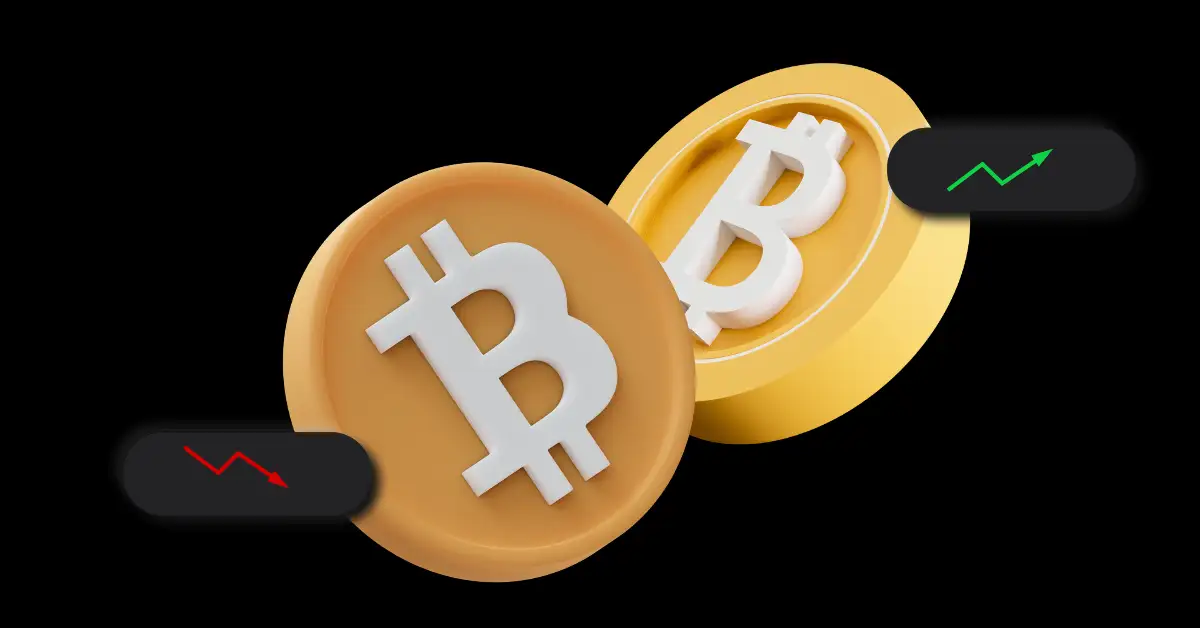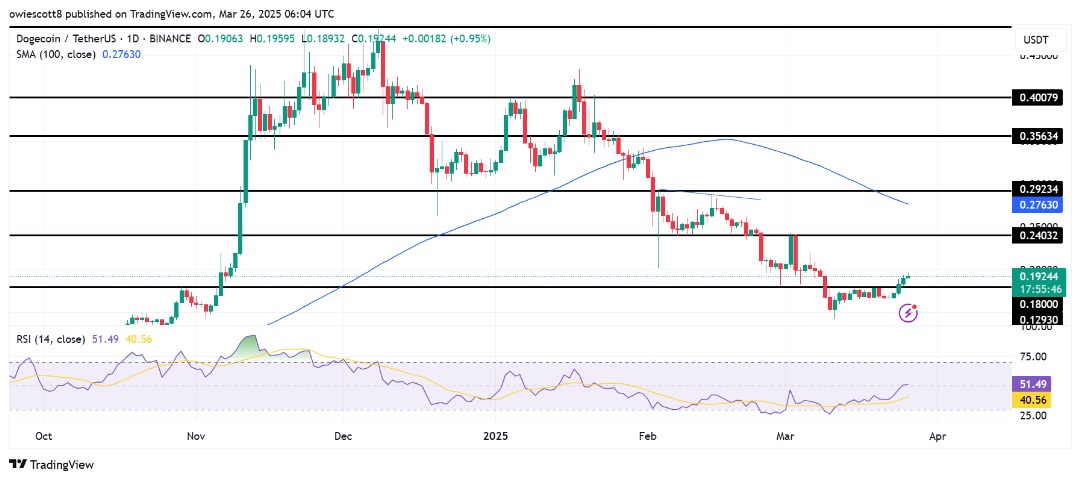Bitcoin News: 150-Year Market Cycle Signals No BTC Bull Run Until 2026—Here’s Why
- According to a chart published in 1875 by Samuel Benner, Bitcoin investor Lark Davis predicts that a major bull run may not occur until 2026.
- With today’s FOMC meeting, the Federal Reserve is expected to keep interest rates steady at 4.25%-4.5%, which could either boost Bitcoin or increase market volatility.
Recent analyses suggest that Bitcoin’s current bull market could extend into 2026, challenging the traditional four-year cycle theory. This outlook is based on historical market trends and key economic indicators.
Currently, Bitcoin (BTC) is at a critical juncture, testing major resistance levels that could determine its next move. As of March 19, BTC is trading at approximately $83,245, reflecting a 0.25% increase over the past 24 hours. However, in the last 30 days, Bitcoin has dropped by 13.7% after reaching its all-time high of $109,000 on January 20, 2025, during President Donald Trump’s inauguration.
This price movement comes amid growing market uncertainty ahead of the Federal Open Market Committee (FOMC) meeting. Investors are closely watching for signals on the Federal Reserve’s monetary policy. If the Fed adopts a dovish stance, markets could see a boost even without an immediate rate cut. However, a more hawkish tone could put downward pressure on Bitcoin and other risk assets.
Expert Insights on Extended Bull Run
In a recent social media post , Bitcoin investor and entrepreneur Lark Davis highlighted the 150-year-old Benner Cycle, a market cycle chart created by Samuel Benner. This chart identifies historical patterns in financial markets, marking specific years as “panic years” (such as 1927, 1945, 1965, 1981, 1999, 2019, 2035, and 2053) and others as optimal selling periods (including 1936, 1957, 1972, 1989, 1998, 2007, 2026, and 2043).
The chart, which reportedly predicted the 2008 financial crisis, suggests that 2026 could be another peak for selling, labeled as a “year of good times.” This has sparked speculation on whether the current Bitcoin cycle could extend into 2026, potentially leading to a new all-time high in 2027. However, Davis cautions that only time will tell if this pattern holds true.
Meanwhile, opinions on Bitcoin’s near-term trajectory remain divided. As stated in a recent CNF update , Ki Young Ju, CEO of CryptoQuant, thinks the “Bitcoin bull cycle is over,” predicting 6–12 months of bearish or sideways price action. He argues that on-chain indicators point to a bear market, with new whales selling off Bitcoin at lower prices, draining fresh liquidity.
Not all analysts share this bearish outlook. Network economist Timothy Peterson expects Bitcoin to reach new all-time highs of $126,000 as early as June 2025, citing the formation of a rising wedge pattern on Bitcoin’s price chart. This pattern is approaching a crucial moment, if Bitcoin breaks out, it could trigger a significant price surge, whereas a rejection might lead to further declines.
On a positive note, Bitcoin’s market momentum showed signs of recovery as spot Bitcoin ETFs recorded $275 million in net inflows on March 17, breaking a month-long trend of outflows. Additionally, legislative interest in Bitcoin is growing, with Minnesota State Senator Jeremy Miller introducing the Minnesota Bitcoin Act. If passed, this bill would allow the state to invest in Bitcoin, aligning Minnesota with a growing number of U.S. states exploring crypto investment opportunities.
Recommended for you:
- Buy Bitcoin Guide
- Bitcoin Wallet Tutorial
- Check 24-hour Bitcoin Price
- More Bitcoin News
- What is Bitcoin?
Disclaimer: The content of this article solely reflects the author's opinion and does not represent the platform in any capacity. This article is not intended to serve as a reference for making investment decisions.
You may also like
VIPBitget VIP Weekly Research Insights
The RWA (Real-World Assets) sector has been gaining significant traction in the crypto space, as it tokenizes traditional assets like real estate and bonds to bridge the gap between TradFi and DeFi. This process unlocks trillions of dollars in potential value, while enabling broader access to high-value investments through asset fractionalization, increased liquidity, and lower entry barriers. RWA also diversifies and stabilizes DeFi collateral options, addressing the sector's over-reliance on crypto-native assets and paving the way for large-scale adoption. With regulatory frameworks becoming clearer worldwide, the compliance advantages of RWAs are increasingly evident—drawing in institutional capital. What sets RWA projects apart is their connection to real-world income streams like rent and interest payments, offering more sustainable returns than purely speculative assets. These cash-flow-generating features appeal to investors seeking steady returns. As such, RWA is seen as a crucial step in the evolution of blockchain technology from concept to practicality. Its development potential and practical use cases make it an important sector in the crypto industry today.

Ethereum advances Pectra upgrade after Hoodi testnet success

Economist warns of a recession: Will Bitcoin and altcoins crash or rise?

Dogecoin Proves It’s Not Dead – $0.18 Retest Could Be The Beginning

